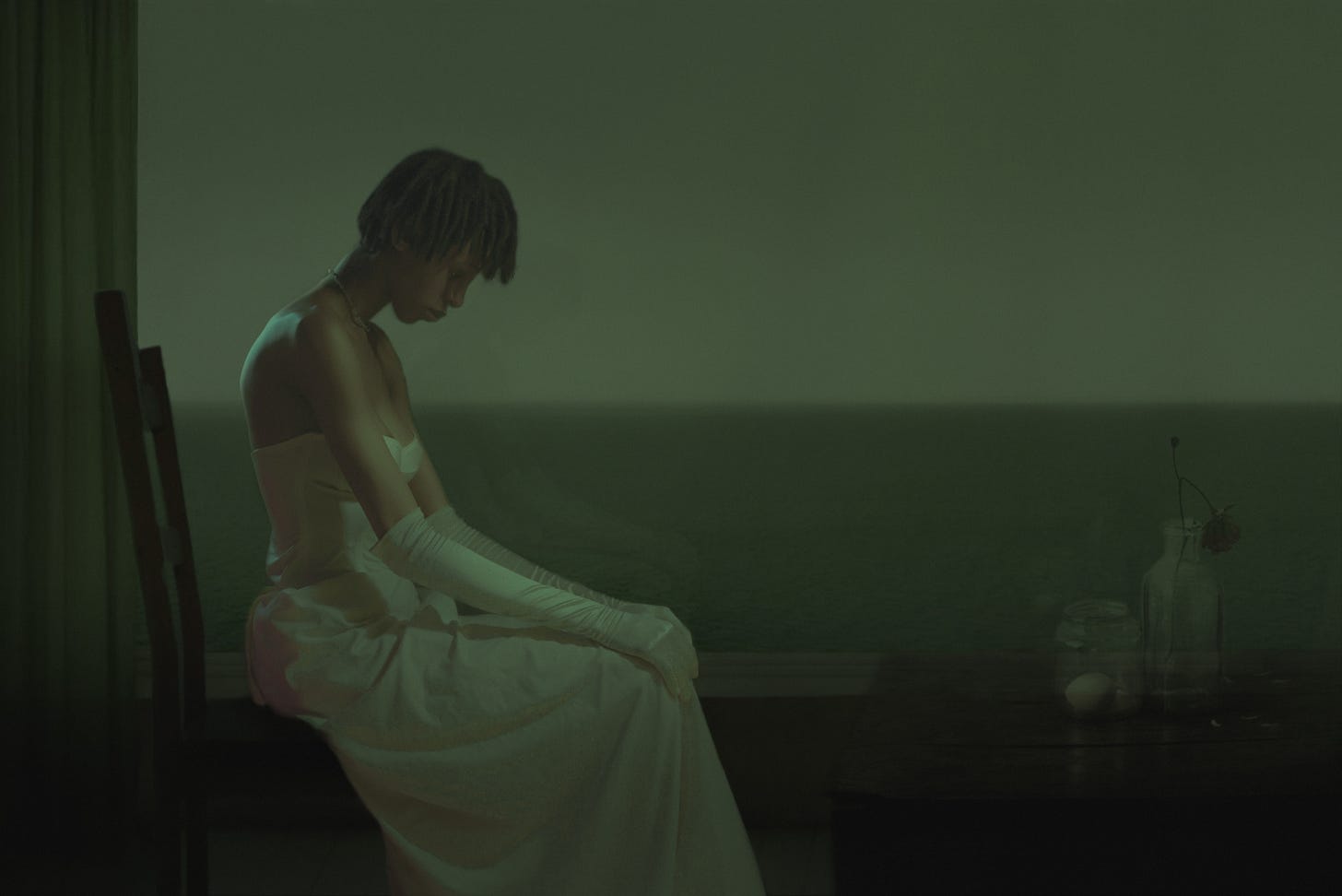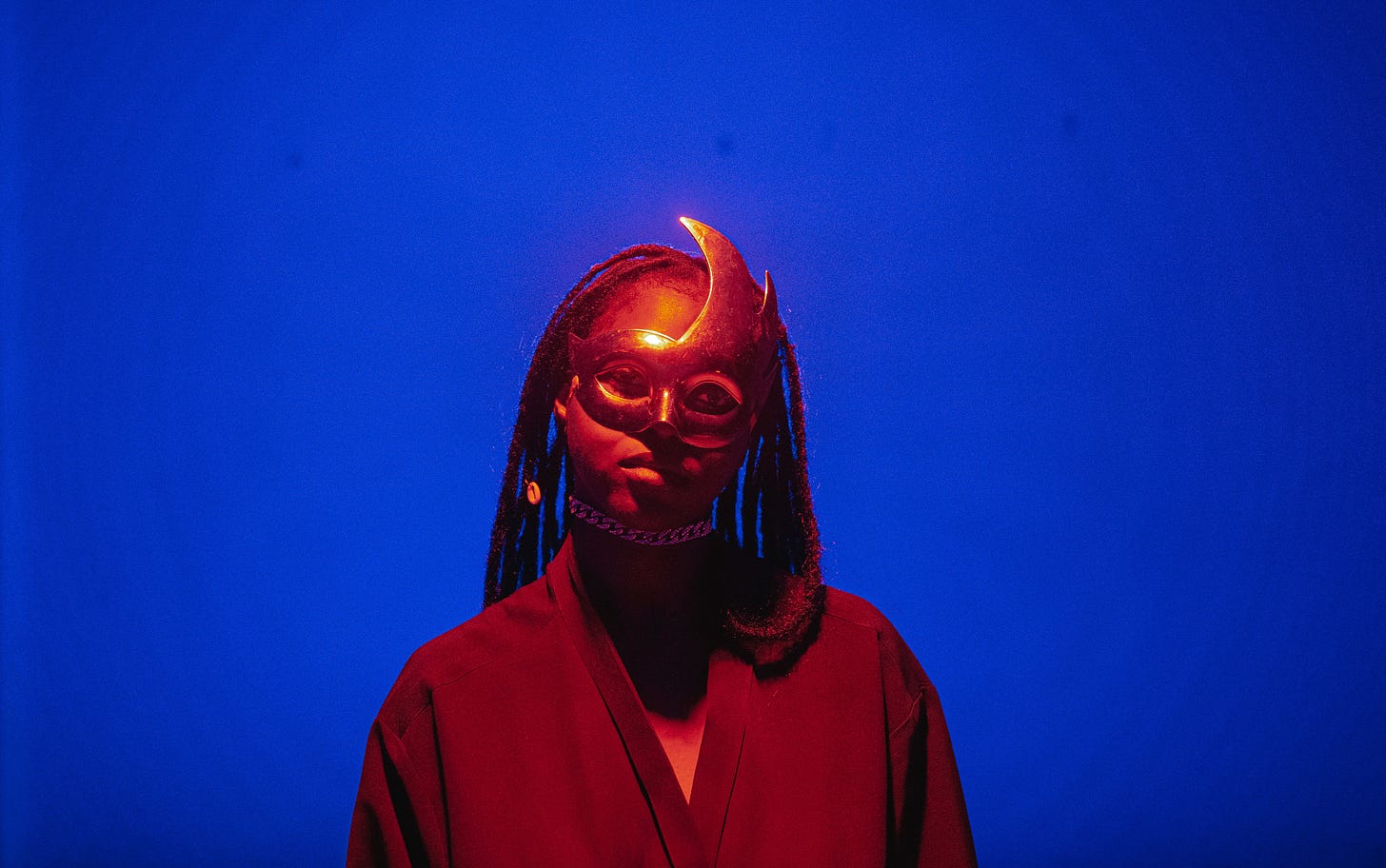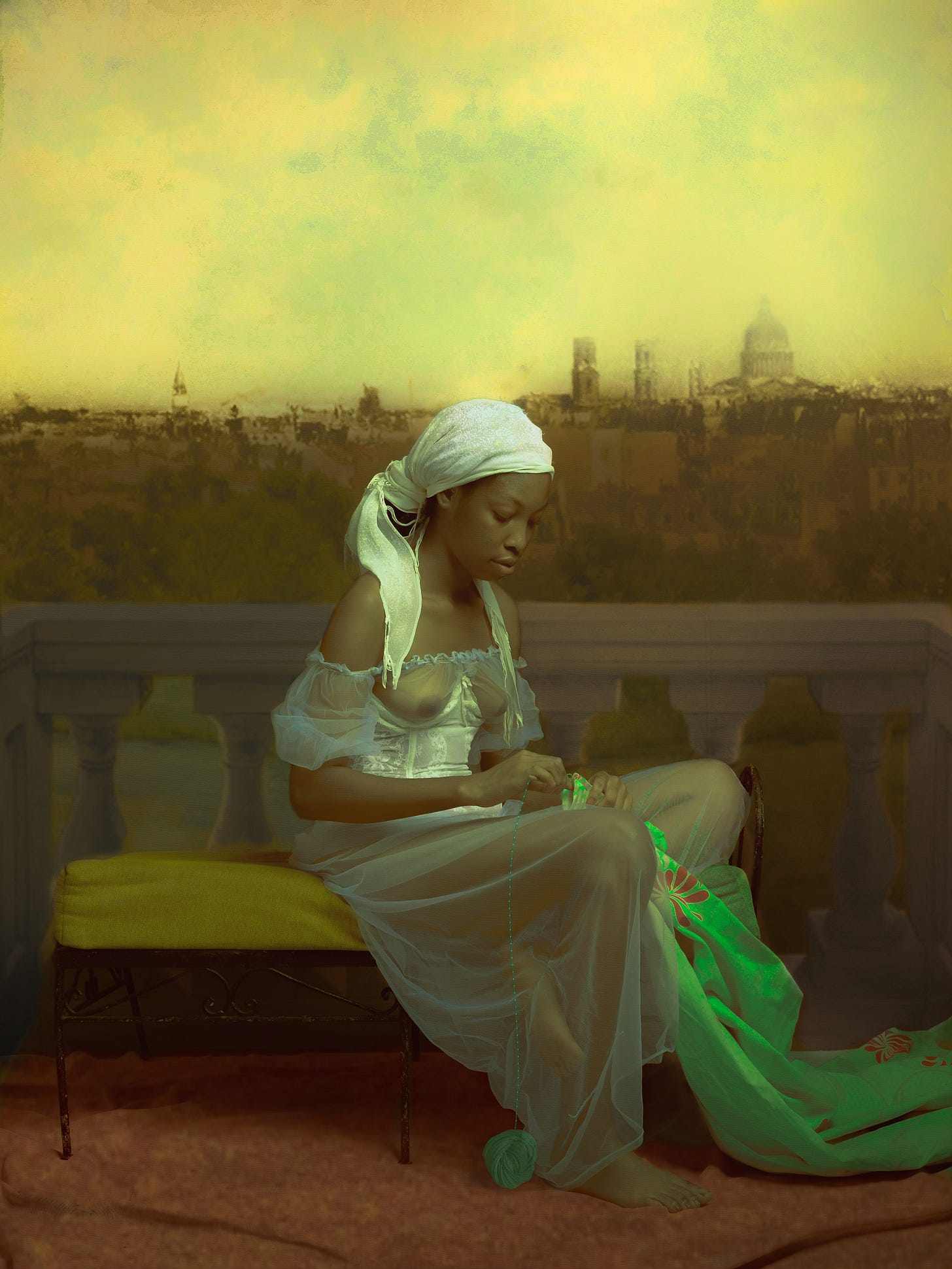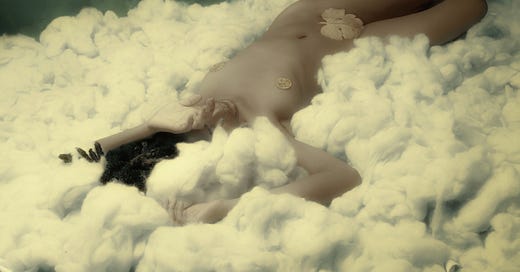
In the last few months, I’ve found myself in conversations that pushed me to, again and again, ask this question: Why do African artists have to prefix their work with “Afro”?
Afro-futurism, Afro-surrealism, Afro-fantasy.
Afro-this, Afro-that.
I have wondered why we cannot just call our works futurism or surrealism or, at the very least, “African Surrealism,” while we, in turn, refer to the likes of André Robert Breton and Salvador Dali as “European Surrealists.” I want to know why we must qualify our art as adjacent rather than claim it as central. And yes, I understand the mechanics of white supremacy, and I’ve read the artistic manifestos, but listen.
The first time I addressed a version of this question was early this year, during an exchange on X with a friend. I’d said this:
There is a box that Nigerian/African writers are put in, and it is the same one that compels our musicians to make “oonga boonga” music to gain global recognition.
I call this style of writing “African™.”
While I cannot clearly define the boundaries of said box, I have noticed that in “serious” literature, there is a set of sanctioned ingredients, like ancestors rendered in a specific aesthetic, griot tones, masquerades, iroko trees, and a sensory parade of the expected.
He challenged me, saying there’s diversity in African writing.
And yes, there is.
But if you look closely at who wins grants, who gets platformed, and who gets published and praised, you may notice a pattern. A recognizable flavor that gatekeepers can stomach. Art that performs its Africanness so that no one has to ask if it qualifies. The box decides that “true” African writing must speak from the village, not from the studio apartment or an EDM dance floor or a Discord server. If your work is interior, techy, or mundane, it is often ignored, misunderstood, or considered not “African enough” to represent.
And this box extends to other forms of our expression, like music and fashion.

Were you online when people insisted that Alternative/alté Nigerian music wasn’t Nigerian music, basically because it wasn’t afrobeats? This, despite the fact that many of us have no trouble listening to Travis Scott, Beyoncé, or UB40. Yet somehow, when Nigerian artistes draw inspiration from similar sounds, they’re accused of abandoning their roots and denied an audience.
Meanwhile, afrobeats is itself an offspring of afrobeat, rooted in American jazz, funk, and highlife. Many things we pedestalize as “authentically Nigerian,” like Pentecostalism, heteronormativity, pidgin English, stock fish, bread and tea, and tomato-pepper stew, are, in fact, Western imports and remnants of colonial influence.
Even in progressive circles, we echo that same conservative Nigerian refrain: “It’s not our culture!” Forgetting that culture is dynamic.
I read taröt on Instagram and recently, I changed my handle from tarotperday to Nigeriantarot. This change was because I wasn’t posting daily as the former name implied and because I had not come across any other Nigerian card reader on the platform.
Almost immediately, someone reached out, asking to collaborate on a deck with Nigerian imagery. He suggested using Nsibidi symbols, incorporating ancestor worship, and infusing it with recognizably Nigerian visual culture. His logic was: if the page is called Nigerian taröt, then my cards should look Nigerian.
But when I chose that name, “Nigerian taröt,” I meant that I, a Nigerian, read taröt. And because the readings come from my perspective, they are Nigerian.
His suggestion—though well-meaning and possibly even a fun project—once more exposed the expectation that for African expression to be considered African, it must wear its Africanness like a costume. And not just any conceptualization of Africanness. It must be the kind that people expect: calabashes, kolanut, danfo buses, suffering, and juju—symbols that have been traded for the diversity of the African imagination.
To be clear, I may have been willing to make a deck like that if such a project was not research and capital-intensive. I would do it for purely the aesthetics not as a form of reclamation. But a taröt deck would require seventy eight original, symbolically-rich illustrations when there is little to no market for its sale in Nigeria.

Besides, the deck I use is the Rider-Waite-Smith taröt deck, created by members of the Hermetic Order of the Golden Dawn. Its cards capture what I consider universally human themes and that is why most contemporary decks draw from its symbolism. I pointed out that archetypes like mother, self, hero, child, and themes like heartbreak, rebirth, partnership, friendship, conflict, mastery, death, lack, and choices are not European but human.
I also mentioned that taröt reading is a European divination system, a Western inheritance and adding stereotypical imagery of Nigerianness to the cards will not decolonize the practice, it would only dress it up in local fabric. It would be an aesthetic substitution, not a structural transformation.
I said to him, “If you’re passionate about platforming Nigerian divination, why don’t you visit spiritual orders from your place of origin—say, the Ekpe or Ekpo cults—get initiated into their practices, and use their mediums like ukara, wood, or raffia instead of paper.”
This isn’t to say African imagery doesn’t belong in new creations. It does and there are several popular taröt decks that center Black bodies and African cosmologies, and I plan to purchase some as I progress in my practice. But it did make me once more ask:
Why do we feel compelled to bend our work into a specific brand of African? Even when our inspirations, interests, and mediums are Western. Even when our so-called traditions take root in our colonial past?
Example: The Efik male and female cultural attire.

I’ve been working on Banana Boat lately. It is a surrealist film about longing, heartbreak, and rebirth. Very little in it screams “Africa”—except that I am African, my crew is African, we are shooting in Africa, and African actors are in it. Still, to make it legible, to get it seen, I am burdened by the expectation to squeeze it into a box of clichés so it can be called “Afro-surreal.” Because to gatekeepers, I am not human. I am Afro-human.
But unlike many in the African artistic intellectual space, I consider this prefixing to be less empowering and more like a gate that allows entry, but only into a side room.
It says you can be surreal, but only an Afro-surrealist. You can write futuristic stories, but not the future. You can make art, but only afro-art.
In his 2013 essay, Is the Prefix ‘Afro-’ (as in “Afro-Futurism”) Arresting Our Imagination and Manifesto Salesmanship?, Phetogo Tshepo Mahasha, a South African philosopher and filmmaker argues a similar thesis. He writes:
“Miller claims that Afro-Surrealism is NOT Surrealism. And then he goes on to define something different from ‘Surrealism’ and calls it ‘Afro-Surreal’. My question when I read Miller’s Manifesto was, why call it Afro-Surrealism if it is not Surrealism? Why prefix the word Surrealism with ‘Afro-’?
Most importantly, since it is so different from Surrealism, why not call it something entirely new?”
The expression of any person, regardless of their skin color or cultural heritage taps into a shared language, just as dreams are not the exclusive property of one continent. Why should the African voice only be heard if it speaks a specific dialect? Do we not understand that the Nigerian mind cannot be anything other than Nigerian? What is Nigerian?
But I understand the impulse.
I get the urge to decolonize, to see yourself reflected in the media you consume. But sometimes, in the rush to decolonize, we forget that our cultures have already changed. Westernization is part of our story now. Denying this in pursuit of a purified Africanity often creates a new kind of performance—one just as rigid as the colonial frameworks we’re trying to escape.

Wakanda is beautiful, but it’s still wearing Western gear. Even with Black bodies at the center, its vision of the future remains framed by Western aesthetics. Being African is beautiful, but even the words “African” or “Nigerian” were given to us by Europeans.
So instead of inventing “Afro-” versions of everything, what if we simply entered the conversation—unapologetically—without positioning our work as derivative?
If the only way my art can be called African is by decorating it with the expected symbols, then maybe it’s not my art that needs redefining—it’s the idea of Africanity. Maybe the loudest claim we can make is simply: I’m here. No costume. No prefix. Because even if I choose to write about white people, or set my characters in Kyoto, my art is African. Because I am.
Author’s Note:
I was conflicted about sharing this piece because I know that it’s very much up for debate, and I see validity in both perspectives. But if it bothers me, I’m going to share it.
Special thanks to Kamzy Nuel for permitting the use of his art in this essay. He is a self-taught visual artist working in lens-based mediums and living in Lagos and Akwa Ibom. Kamzy’s style draws from the Renaissance and Baroque art styles; as such, his portraiture blurs the line between photography and painting. His work highlights and roots itself in shared experiences, socio-political issues, cultural themes, and pure artistic musings.
About my upcoming short film Banana Boat. The story follows a young woman’s subconscious contemplation of a connection with a man who has been present but not in the way she needed. Set in a hazy, dreamlike atmosphere, the film explores yearning, idealization, and the ache of wanting to keep something that was never meant to stay.
The film will be premiered by Nocturna Film House on the 25th of July.
Hope you enjoyed this entry, and I’d love to hear your thoughts.
Support Connecting by liking, sharing, and restacking (if you’re on Substack) this post.
Till next time.





“Westernization is part of our story now.” That line hits differently for me because I see the people around me trying to hold on to culture but what they’re clinging to no longer truly exists. What remains is a Westernized version of it, shaped by years of outside influence. Yet we still call it tradition.
Our colours doesn’t change our uniqueness, art is art with or without prefixes or suffixes. Art is also like pain, it’s what the one who experiences it feels.
Congratulations on your upcoming film premiere, you have always loved the Arts.